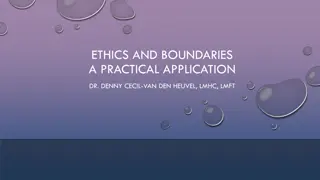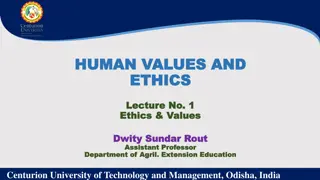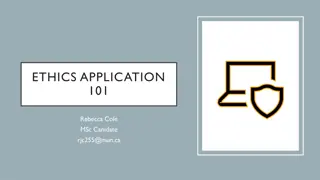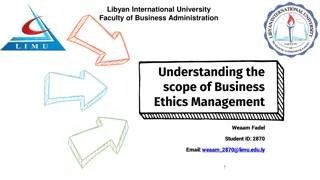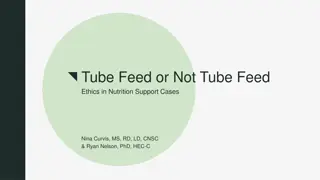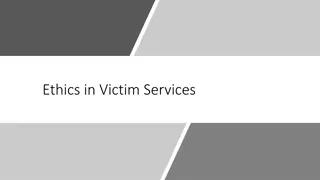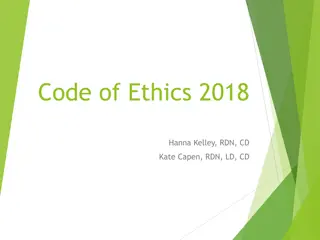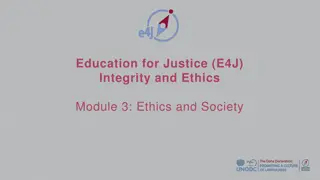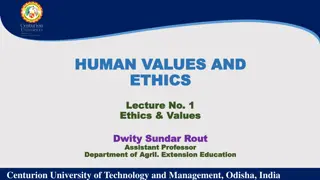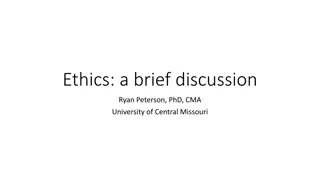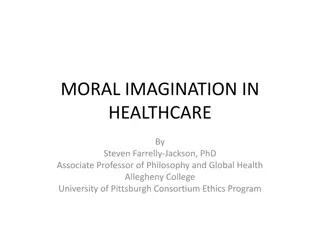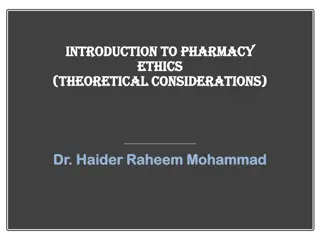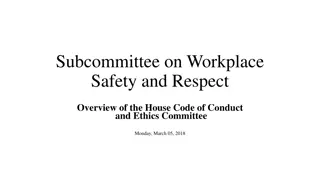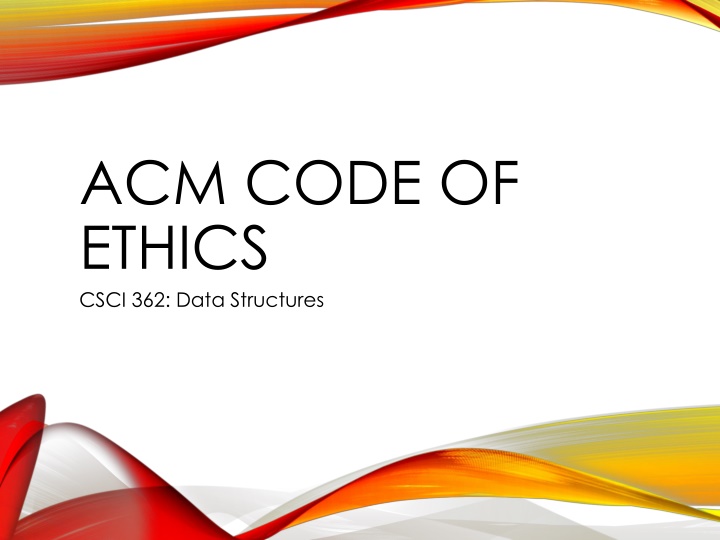
The ACM Code of Ethics
Explore the ACM Code of Ethics for Computing Professionals, designed to guide ethical conduct in the field of computing. Learn about its purpose, structure, and key ethical principles that computing professionals should adhere to.
Download Presentation

Please find below an Image/Link to download the presentation.
The content on the website is provided AS IS for your information and personal use only. It may not be sold, licensed, or shared on other websites without obtaining consent from the author. If you encounter any issues during the download, it is possible that the publisher has removed the file from their server.
You are allowed to download the files provided on this website for personal or commercial use, subject to the condition that they are used lawfully. All files are the property of their respective owners.
The content on the website is provided AS IS for your information and personal use only. It may not be sold, licensed, or shared on other websites without obtaining consent from the author.
E N D
Presentation Transcript
ACM CODE OF ETHICS CSCI 362: Data Structures
THE CODE Developing programs affect the entire world We should attempt to support the public good The ACM Code of Ethics (henceforth referred to as The Code ) is intended to express the conscience of the profession inspire and guide the ethical conduct of all computing professionals includes students, teachers, and developers serve as a basis for remediation when violations occur
UNDERSTANDING THE CODE What it is used for: how fundamental ethical principles apply to a computing professional s conduct serve as a basis for ethical decision-making Intended as a multi-view approach What is is NOT: an algorithm for solving ethical problems a legal document (though you can be removed from ACM if you are a member and are found in violation)
STRUCTURE OF THE CODE Four Sections 1. Highlights fundamental ethical principles that form the basis for the remainder of the Code 2. Addresses additional, more specific considerations of professional responsibility 3. Guides individuals who have a leadership role, whether in the workplace or in a volunteer professional capacity 4. Overviews commitment to ethical conduct is required of every ACM member, and principles involving compliance with the Code
1. GENERAL ETHICAL PRINCIPLES A computing professional should 1. Contribute to society and to human well-being, acknowledging that all people are stakeholders in computing. 2. Avoid harm. 3. Be honest and trustworthy. 4. Be fair and take action not to discriminate. 5. Respect the work required to produce new ideas, inventions, creative works, and computing artifacts. 6. Respect privacy. 7. Honor confidentiality.
2. PROFESSIONAL RESPONSIBILITIES. (1/2) A computing professional should 1. Strive to achieve high quality in both the processes and products of professional work. 2. Maintain high standards of professional competence, conduct, and ethical practice. 3. Know and respect existing rules pertaining to professional work. 4. Accept and provide appropriate professional review. 5. Give comprehensive and thorough evaluations of computer systems and their impacts, including analysis of possible risks.
2. PROFESSIONAL RESPONSIBILITIES. (2/2) A computing professional should 6. Perform work only in areas of competence. 7. Foster public awareness and understanding of computing, related technologies, and their consequences. 8. Access computing and communication resources only when authorized or when compelled by the public good. 9. Design and implement systems that are robustly and usably secure.
3. PROFESSIONAL LEADERSHIP PRINCIPLES. (1/2) A computing professional, especially one acting as a leader, should 1. Ensure that the public good is the central concern during all professional computing work. 2. Articulate, encourage acceptance of, and evaluate fulfillment of social responsibilities by members of the organization or group. 3. Manage personnel and resources to enhance the quality of working life.
3. PROFESSIONAL LEADERSHIP PRINCIPLES. (2/2) A computing professional, especially one acting as a leader, should 4. Articulate, apply, and support policies and processes that reflect the principles of the Code. 5. Create opportunities for members of the organization or group to grow as professionals. 6. Use care when modifying or retiring systems. 7. Recognize and take special care of systems that become integrated into the infrastructure of society.
4. COMPLIANCE WITH THE CODE. A computing professional should 1. Uphold, promote, and respect the principles of the Code. 2. Treat violations of the Code as inconsistent with membership in the ACM.
ACM ETHICS Website: https://ethics.acm.org Sample Case Studies: https://ethics.acm.org/integrity-project/case-studies/ There will be a brief case study question on the exam

